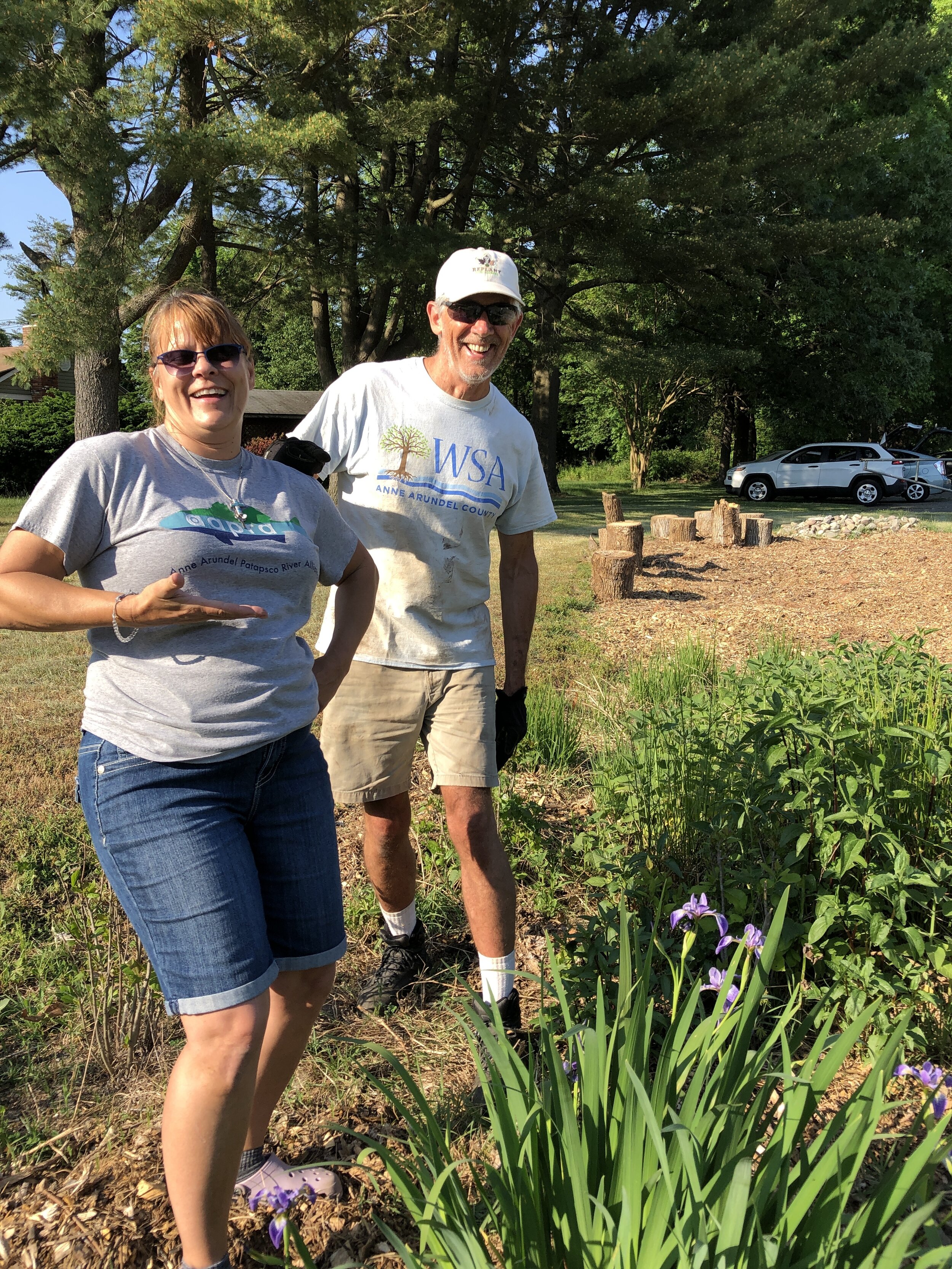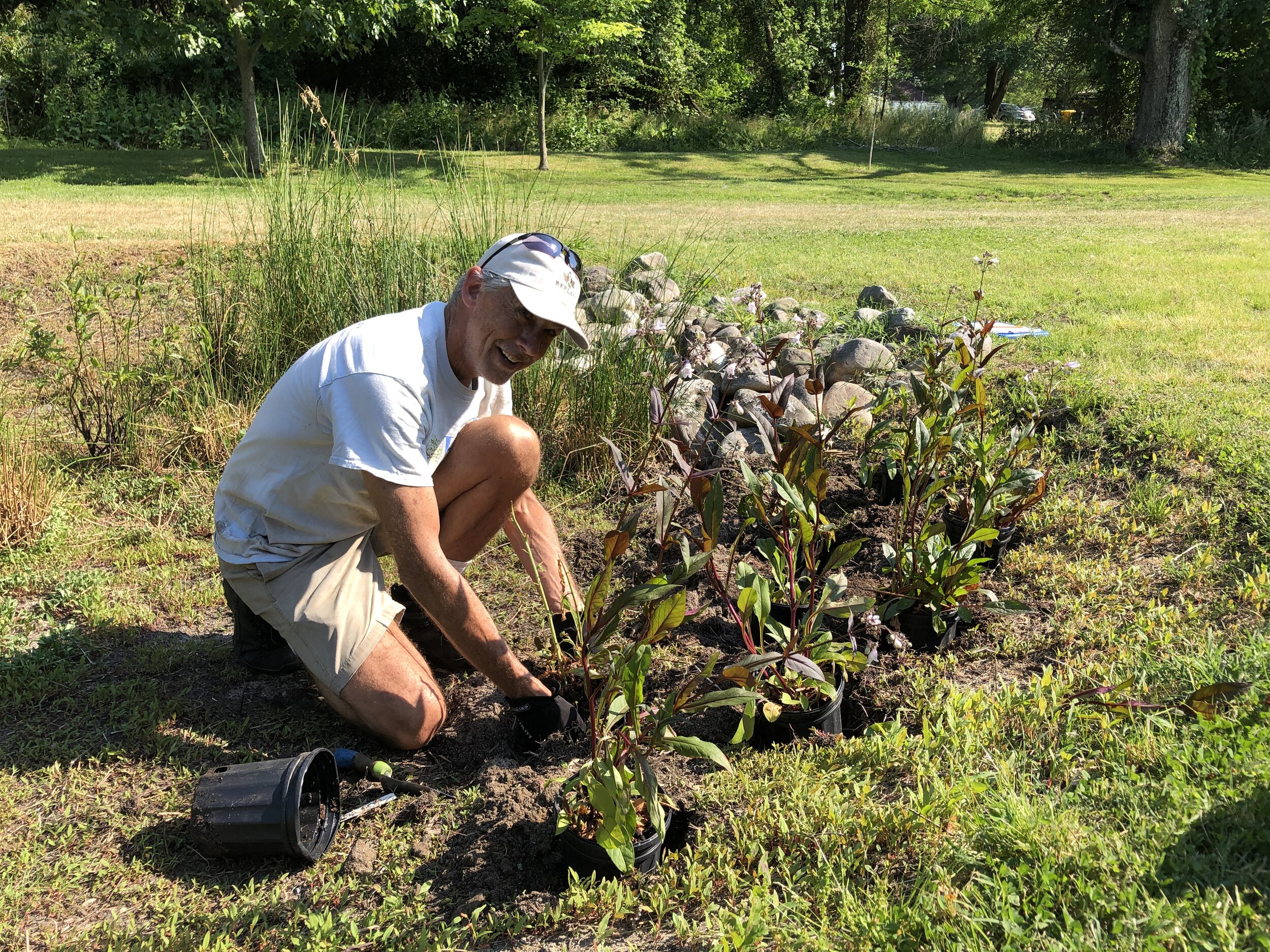July’s Native Maryland Plant
Delphinium exaltatum
(del-FIN-ee-um eks-all-TAY-tum)
Common Name: Tall Larkspur
July is our hottest month, a time when I prefer to ‘look but not touch’ my garden – it’s just too darn hot! Yet I want my garden to look great, full of color and blooming profusely so I can attract hordes of pollinators and observe them up close or at a distance. Delphinium exaltatum is one plant that exceeds my summer-blooming expectations both in flower-bearing and pollinator attraction.
Thinking back a few years, I remember that I almost did not buy this species, mainly due to its very tall stature. I recall seeing this plant in my youth, along woodland borders and on roadsides in New England. Today the biggest threat to roadside Delphinium is habitat loss, mainly due to physical disturbance, widening roads and the severe clearing regimen that severely impacts this and many other plants’ ability to flower or set seed.
Choosing to plant Delphinium in my landscape helps to sustain its population and guarantees that I have a tall blooming flower in the back of my beds that draws in butterflies and hummingbirds as well as a variety of bee species. Because it prefers cooler nights, I planted it where it receives only morning sun and where it is protected from strong winds. The flower color ranges from white to lavender to purple and as its name implies, it is much taller than the earlier blooming and also native, Dwarf Larkspur (Delphinium tricorne).
I find the structure and silhouette of this plant particularly captivating, and as to its stature, I’ve determined that many of my favorite perennials are very tall, excellent pollinator plants and often endangered; it’s up to me to plant them, to promote them and to support them however and whenever necessary – they reward me and pollinators many times over.
¹ A tapering, sometimes curving projection.
~ Alison Milligan – Mstr. Gardener/Mstr. Naturalist/Mstr. Watershed Steward
Chesapeake Bay Landscape Professional (CBLP)












